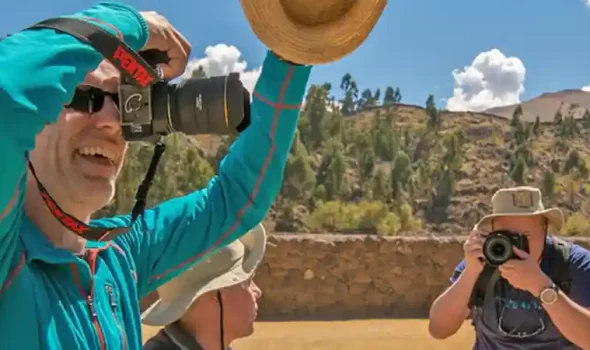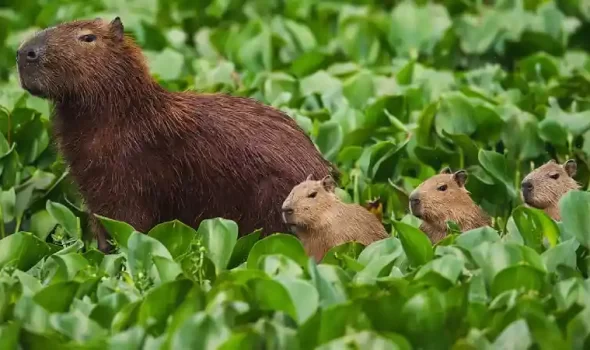The festivals in Peru show us a little of the tradition that is still alive throughout the Peruvian territory through generations, whether in the representation of their clothing, food, music, dance or other kind of expression. Without a doubt, it is something that makes our experience incredible. Auri Peru shows you what are the most famous festivals in Peru and which ones are the most recommended for you.
Depending on your preferences, you can find music festivals in Peru celebrated on random dates, on the other hand if you are looking for something more symbolic or spiritual the Catholic festivals in Peru will be your best option.

Festivals In Peru
1.- ARE THERE FESTIVALS IN PERU?
Of course, there are many festivals in Peru that we are sure you will enjoy during your visit. There are some that stand out from the rest due to their importance and popularity, such as the Inti Raymi in Cusco, the Candelaria Festival in Puno or the Carnivals in Cajamarca. Over the years, their participants have increased impressively, creating new versions of these, although somewhat smaller.
2.- WHAT ARE THE FESTIVALS IN PERU?
There are many categories of festivals in Peru which are aimed at both, visitors and local people. Among the most important categories we have music festivals in Peru, Catholic festivals in Peru, gastronomic festivals in Peru, cultural festivals in Peru and many others. By tradition, it is more common to experience Catholic holidays in Peru due to the Andean cosmogony, as we are very close to our roots and traditions. Among the most famous Catholic festivals in Peru we can find the following examples:
- Virgin of Candelaria: This festival takes place in the city of Puno, which is the point of celebration. It is celebrated during the month of February and mainly has the presence of many groups of dancers who, among colors and a lot of joy, express their devotion to the Virgin of Candelaria. Its name comes from the word candle, which the faithful have directly related as the light that guides towards the right path and this festival is held as a tribute to the presentation of Jesus in the temple of Jerusalem. Although its origin is not purely Peruvian, we see how it adapted to the culture and today it is a clear example of the syncretism that we have in mind.

Festivals in Peru: Candelaria Puno
In 2014 it received a very important recognition as Intangible Cultural Heritage of Humanity, which is why it continues to be widely recognized to this day.
For this year 2024, the celebration begins on February 2, which is known as the “central day” in which the high mass is held and during the rest of the days the music and dance have no end, there is also a competition dance between all its participants until February 12, when the winner is finally crowned.

Virgen de la Candelaria Festival
- Qoyllor Rit’i: During June, in the Cusco city, Quispicanchis province and Ocongate district, a traditional pilgrimage occurs, that has become a tradition and is carried out at the foot of the snow mountain Ausangate, this snow mountain is currently the highest point in the entire Cusco region. Tradition implies to walk approximately 7 km until you reach a church located in the middle of the mountains where we can appreciate the devotion that many generations walk to see a beautiful painting of the baby Jesus, accompanied by music and folk dance. It makes the experience completely unforgettable.

Qoyllurity Festivity
- Señor de los Milagros (Lord of Miracles): Likewise, something very particular happens in Lima in that during the month of October we celebrate the adoration of a miraculous image, which over the years has increasingly strengthened its tradition. For this 2024, it is planned that its celebration will begin on October 5 in which all its faithful followers dressed once again in purple clothing will participate in the tradition.

Señor de los Milagros
This added to the event of the 17th century in which an earthquake that occurred in Lima left a lot of destruction, however the image remained intact, by then the faithful were the African slaves who relied on faith as consolation and also adopted the color purple in meaning of mourning and penance. According to the Andean cosmogony, the color purple represents humility and deep faith, in addition to also representing respect in the Catholic liturgy.
- Señor de los temblores (Lord of earthquake): One of the festivals in Peru that takes place specifically in the city of Cusco, whose celebration has great devotion every year. Every Holy Monday of Holy Week, we witness how the Lord of Tremors walks through the streets of the city in a procession giving his blessing as a way of protection to both the inhabitants and the visitors. For a period of 2 hours we can participate in this Catholic festival in Peru.

Señor de los Temblores
It is common to see that people are dressed in red and carry with them a handful of Ñucchu (traditional Andean flower) which during the procession they spread over the image of the Lord of Tremors, the meaning of this is to request through this act that it can Protect the city from any natural evil that may occur such as an earthquake or natural disasters. With the passage of time this traditional procession became more than just a Catholic festival in Peru, now it is a representation of the unbreakable faith of all Cusqueños and at the same time a complete respect for traditions and cultural heritage.
4.- WHAT IS THE BIGGEST FESTIVAL IN PERU?
As such, there is not only one big festival in Peru, each one has its relevance and importance but if we had to make a list of the biggest festivals in Peru we can consider the following order:
- Inti Raymi:In the beautiful and historic city of Cusco, on June 24 of each year, the celebration of the most important god of the Inca culture, the Festival of the Sun, is held as a tradition, this as such is one of the famous festivals in Peru and as such is an attraction that today is desired by many travelers in the world.

Inti Raymi Cusco
The basis of this festival is religious in Andean belief since, as is known from history, they venerated the Sun god as a source of life and energy, also taking advantage of the season, this festival is held during the winter solstice, which is the coldest day short of the year in the southern hemisphere, this in turn marks a new agricultural cycle and renewal so in its time it was accompanied by andean priests who sacrificed a black flame for the sun god (The color black in andean culture represents purity).
Nowadays, Inti Raymi is not only considered a celebration but rather as a bridge of time, between the past and the present in which we can remember the wisdom of this great culture that at the time was able to dominate the Andes. In 2024, it is estimated that around 750 to 800 Cusco actors will represent what was once the most important festival of the Inca culture. You can visit it during your stay in Cusco but don’t wait too long to get your entry ticket, as it is very popular, admissions sell out quickly.
- Carnivals in Peru: It is undoubtedly one of the famous festivals in Peru and can be enjoyed best in the cities of Arequipa, Cusco, Ayacucho and mainly Cajamarca where the colors and dances begin at sunrise and can last. Several days, if it is the type of activity for you, remember to be ready because water, flour, water balloons and talcum powder will be your best resources to have fun clearly accompanied by dances and music with a lot of joy.
- Corpus Christi: This Catholic festival in Peru is a mix between Catholic devotion and Andean customs, it is an ideal moment to feel the faith and cultural tradition of the country. In 2024 this celebration will take place on May 30th, so we have time to plan our trip.

Corpus Christi Cusco Festivity
Its story is told from colonial times in which some Spanish missionaries made it present in the 16th century, since then it has been transmitted through generations until today with the celebration that we know, a mixture of cultures in which we celebrate the real presence of Christ in the Eucharist while at the same time honoring the earth (Pachamama).
Something very representative of this festival is that impressive processions take place in various cities and towns in the country. The streets are filled with worshipers dressed in traditional costumes, carrying sacred images and banners as they advance towards local churches. But what really captivates spectators are the floral carpets that adorn the path of the procession accompanied by folk music and dance typical of each city.
- Virgin of Chapi: this Catholic festival in Peru is celebrated exactly in the city of Arequipa in which every year the parishioners of the town of Polobaya carry out a walk in the pilgrimage area on May 1 of each year, every year that is accompanied with a gastronomic series.

Virgen de Chapi
There are many other festivals in Peru which are worth knowing. And happily today you can do everything with good planning. Remember that Auri Perú is always attentive to giving you the best attention and the best experience for you and your loved ones. Contact us now and discover everything you can experience in Peru.
“Exceed your expectations living a festival in Perú”



















